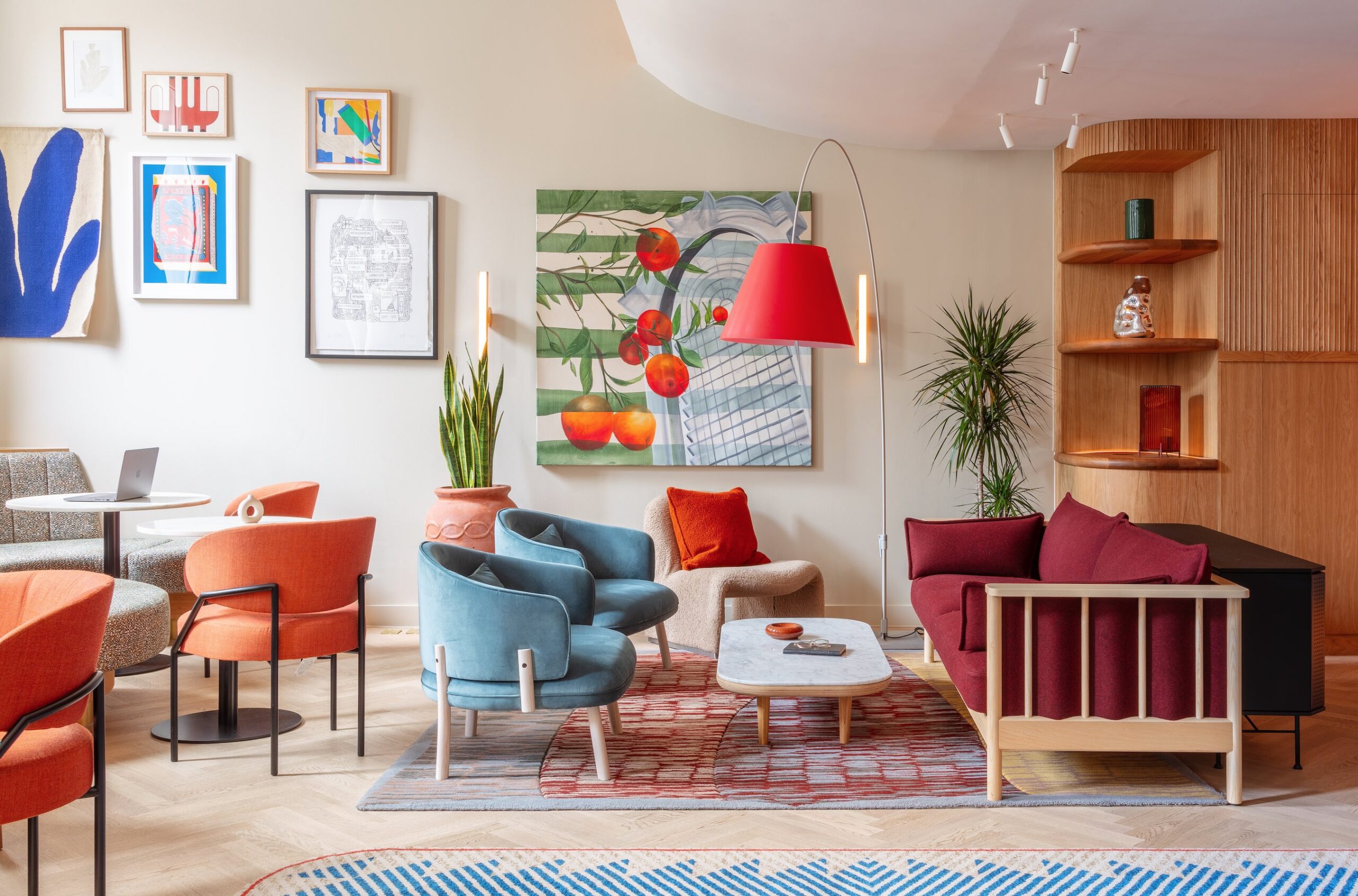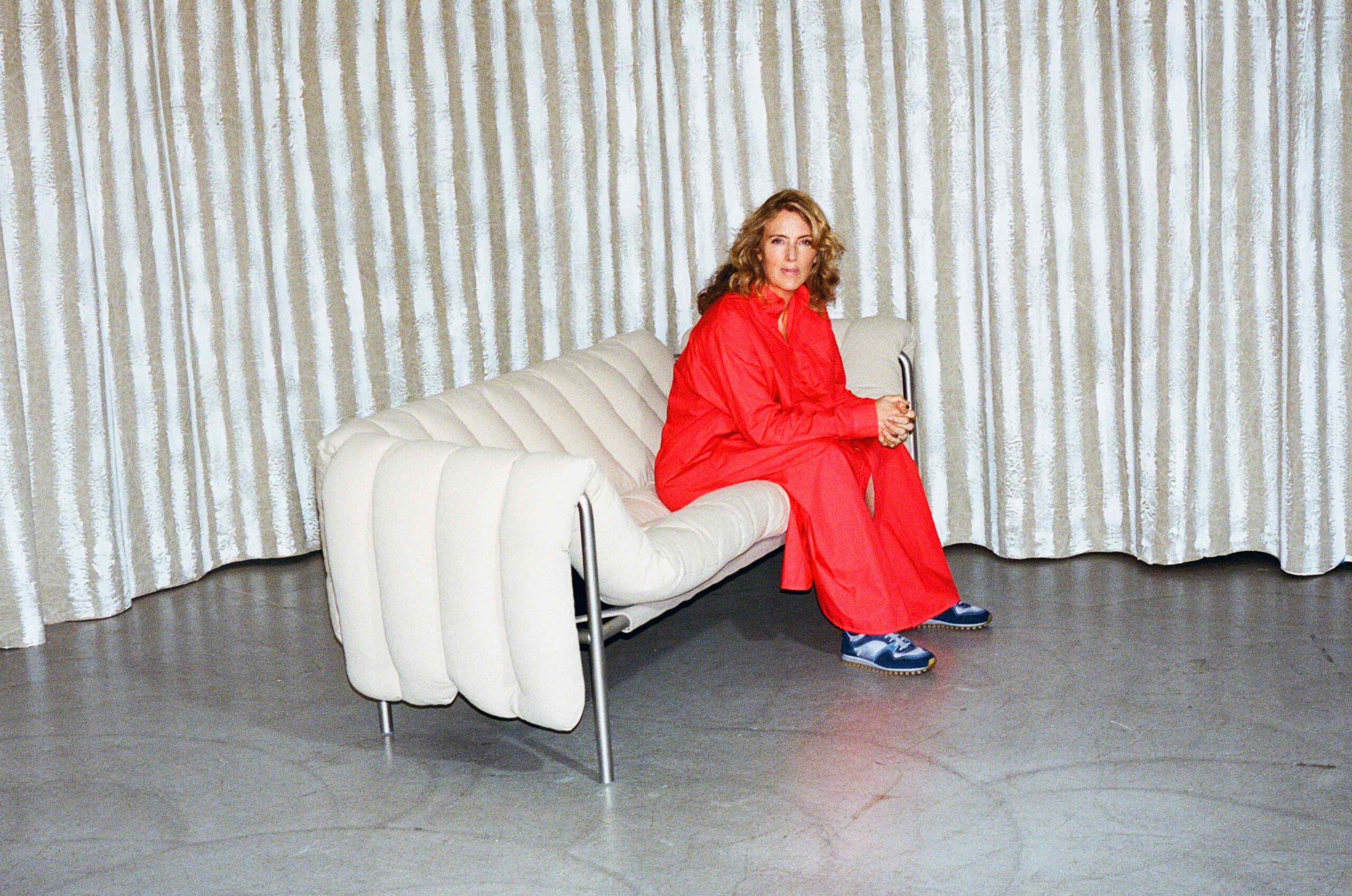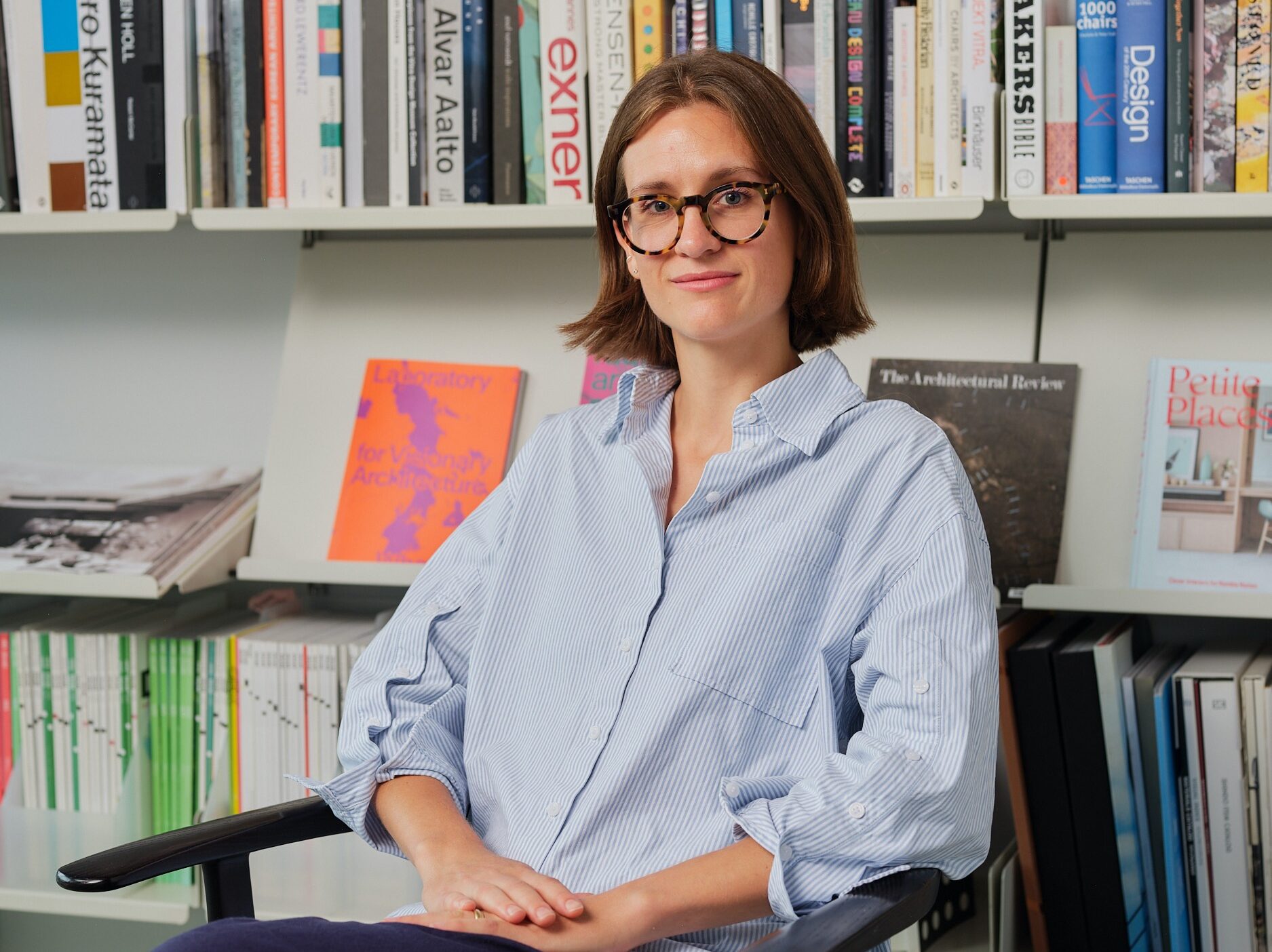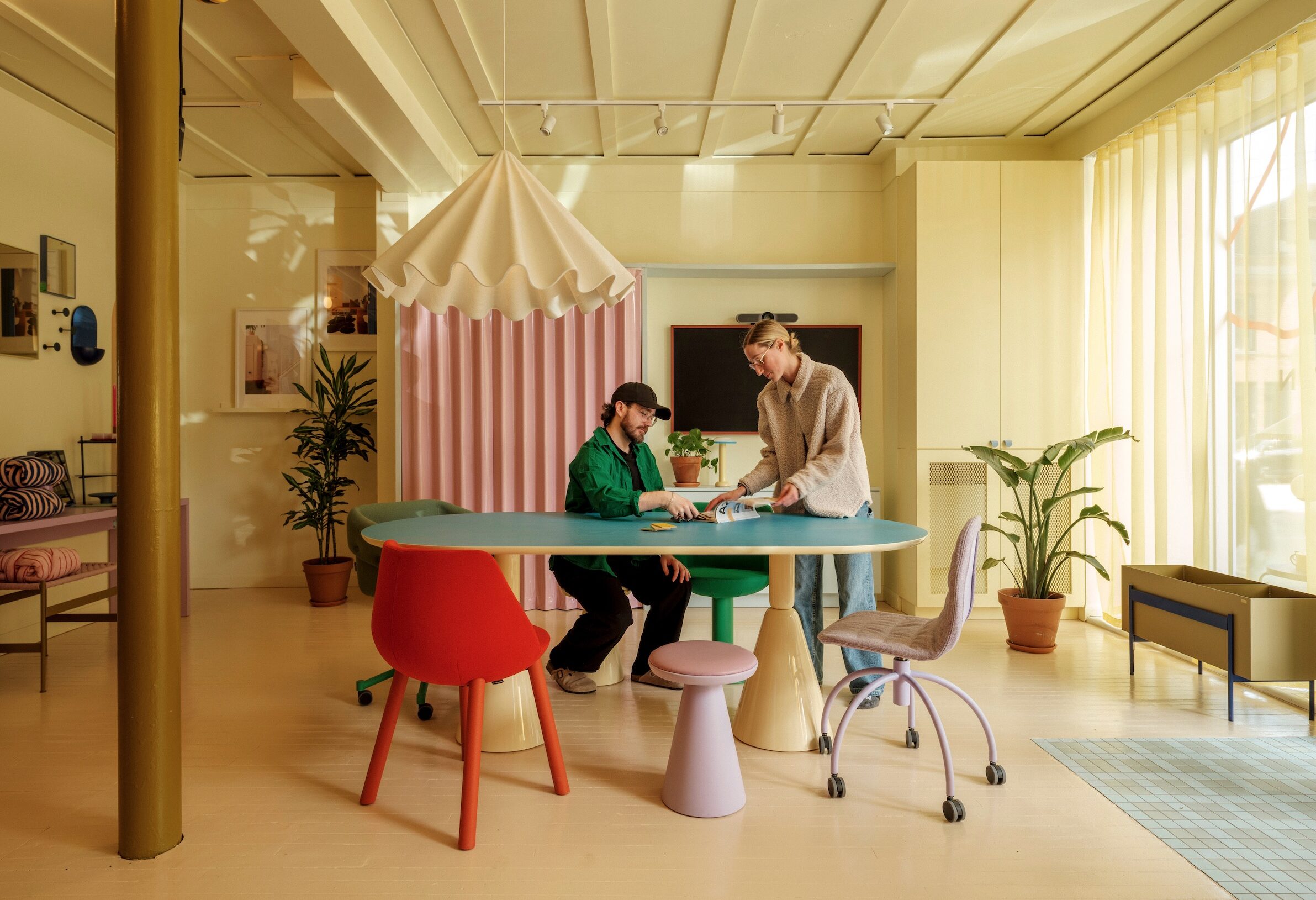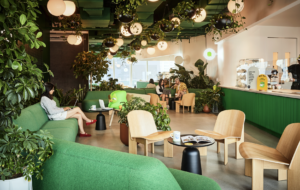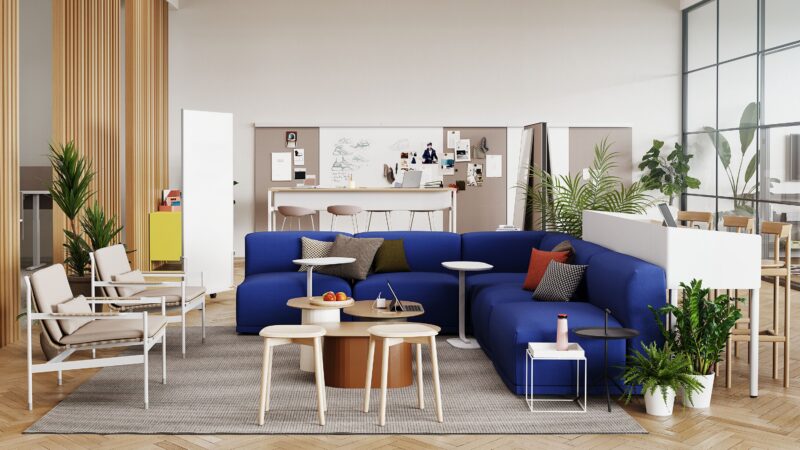
Discover the shared passion, the risk-taking and the legacy that brought Herman Miller and Knoll together
Two names have been shaping our living and working spaces since the early 20th century: Herman Miller and Knoll. Since then, these brands have continued to push modern design past the boundaries and to mould it in respectively unique ways. And yet, despite their differences, their histories converged early on, at Cranbrook Academy of Art. Now, after decades as competitors, the two brands have come together, forming something far more remarkable.
The Cranbrook Connection by MillerKnoll
This is MillerKnoll: a collective of dynamic brands formed in 2021 to design the world we live in. Guided by a shared vision, a steadfast love of design and a commitment to sustainability, MillerKnoll is imbued with a passion that was sparked by the designers who started it all. They are Florence Knoll, Eero Saarinen, Harry Bertoia, and Charles and Ray Eames, and they met at Cranbrook Academy in the 1930s.
Charles and Ray Eames played a significant part in sculpting Herman Miller’s human-centric approach to design. They followed in the footsteps of Alexander Girard and George Nelson, who took Herman Miller from heavy, traditional furniture maker to pioneer of home and office furnishings, steered by Herman Miller founder D.J. Dupree.
Knoll, meanwhile, quickly made its mark by enlisting renowned designers like Ludwig Mies van der Rohe and Eero Saarinen. Under the helm of Hans Knoll and his wife Florence, Knoll soon stood out for its unique blend of architecture and furniture design.
 A selection of Tun Tables by NaughtOne in a wide range of colours
A selection of Tun Tables by NaughtOne in a wide range of colours
In the 1930s and 40s, Herman Miller and Knoll went head to head, their rivalry fueling their capacity for innovation. Over the years, however, they found themselves sharing designers and manufacturing techniques. This convergence of talent and vision led to exciting collaborations. For instance, Don Chadwick and Alexander Girard worked with both Herman Miller and Knoll. This fusion of creative forces not only inspired many of modern design’s best-loved creations, but it also led to Herman Miller and Knoll’s merger in 2021.
MillerKnoll isn’t simply about merging two legendary brands; it’s about creating a collective of innovative companies dedicated to shaping the future of design that improves people’s lives—and the state of world around us.
“Our brands are united by a belief that through design, we can create a better world. Our care shows up in everything we do—from the spaces and products we make to the ways we think and actions we take,” says Nikos Liapis, MillerKnoll Regional Director, UK & Ireland.
 Aeron Chair by Herman Miller
Aeron Chair by Herman Miller
“Even though our brands have a shared DNA of great design, all have a distinct identity,” says Liapis. “We want to maintain the individualism and character of our brands to serve a wide variety of our customers with the best and most diverse design solutions and continue creating beautiful and distinctive designs. This is what sets us apart from our competitors.”
Brands in the MillerKnoll collective include HAY, a Danish design company known for its playful and innovative approach to furniture. They apply their outlook to collections like Crate, a fun, fresh take on outdoor lounge furniture.
Then there’s NaughtOne, a British brand crafting beautiful, simply designed furniture that last the distance, and that lets people use it any way they like. Take, for example, the Tun Table, a striking plinth base available in an array of bold colours, offset by a slim tabletop that can be customised to match or to contrast.
 Olso Side Chairs paired with other products from Muuto
Olso Side Chairs paired with other products from Muuto
Muuto, meanwhile, brings a contemporary take on tradition to the table, alongside a respect for craftsmanship and honest expression. The Oslo Chair exemplifies the brand’s approach with a simple, curvaceous silhouette that recalls traditional Japanese architecture.
Sharing MillerKnoll’s passion for ergonomics is Colebrook Bosson Saunders. Among its latest products is Flo X, a high-load monitor arm that can hold bigger, heavier screens, plus dual and triple monitors, thereby streamlining the connection between humans and technology.
The list wouldn’t be complete without Herman Miller and Knoll. Knoll continues to be a cornerstone of the collective, seamlessly blending form and functioning modern designs. Case in point, the Barcelona Chair. Designed by Mies Van der Rohe in 1929, this sleek chair is still as much of an icon as it was when it was first designed.
 Knoll. Platner Easy Chair Gold. Designed by Warren Platner, 1966. Ph.Ezio Prandini
Knoll. Platner Easy Chair Gold. Designed by Warren Platner, 1966. Ph.Ezio Prandini
Herman Miller, on the other hand, is known for its problem-solving approach to contemporary interior furniture, work chairs, and ergonomic office solutions. The Fuld Nesting Chair is one example of this approach in play: its sleek, lightweight design and Y-shaped back offer a new reference point for nesting chairs.
When Herman Miller and Knoll came together, they did so with a clear commitment to designing for humankind. That means putting the health of not only people, but also our planet, first. “We work intentionally with our global partners and brands to reduce our carbon footprint, design out waste, and source better materials,” says Liapis. “Recently, we transitioned to 100% renewable hydro and wind energy at our largest facilities and we have begun incorporating ocean-bound plastic into some of our most iconic pieces.”
By placing sustainability at the forefront of their operations, MillerKnoll shows us it’s possible to create beautiful, functional, and planet-friendly furniture. So, when you interact with a product from the MillerKnoll collective, you’re not only experiencing great design; you’re also participating in a legacy that values the past, the present… and generations yet to come.
 A selection of chairs from the About A Chair collection by HAY
A selection of chairs from the About A Chair collection by HAY
Find out more at MillerKnoll.com
Photography courtesy of MillerKnoll

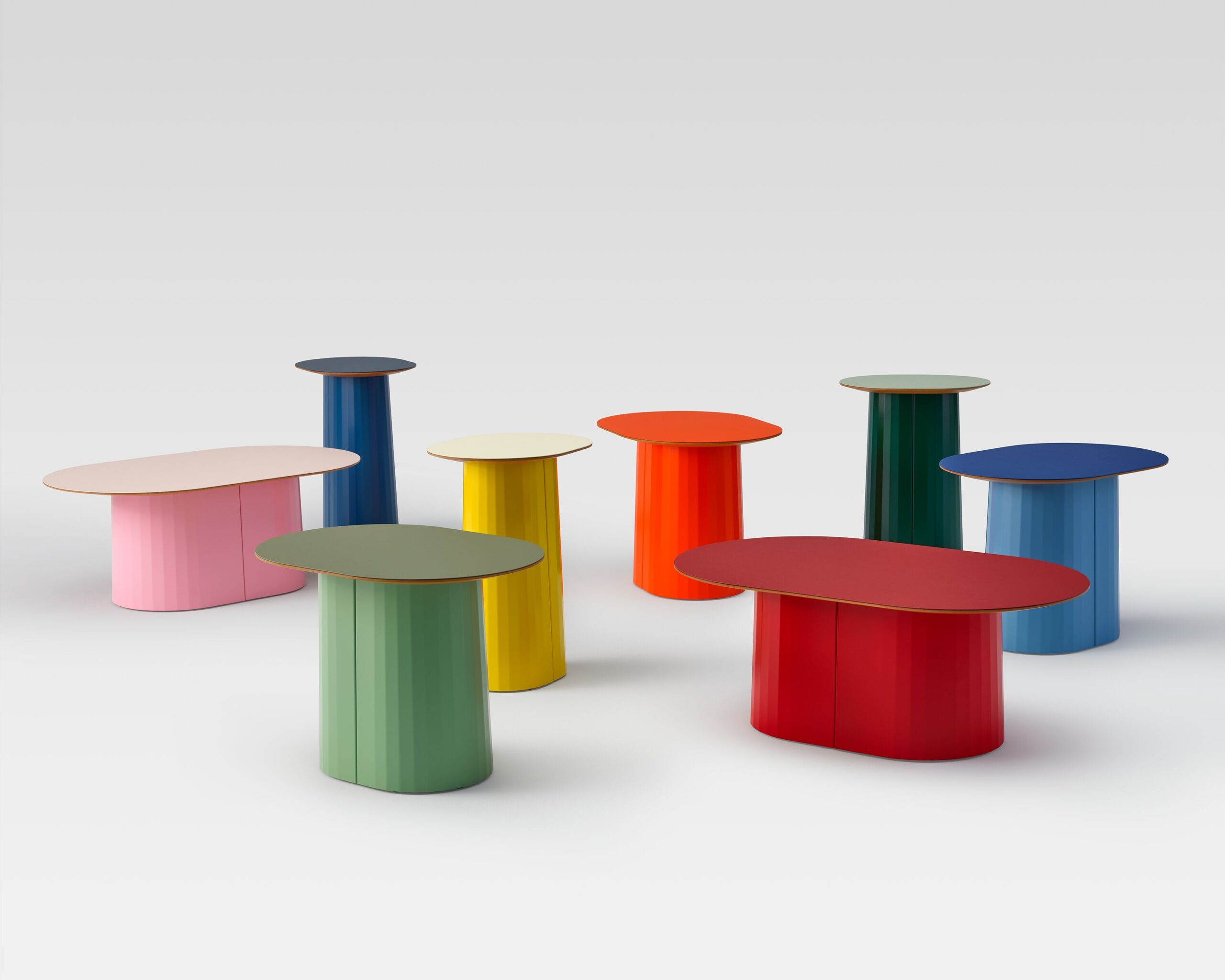 A selection of Tun Tables by NaughtOne in a wide range of colours
A selection of Tun Tables by NaughtOne in a wide range of colours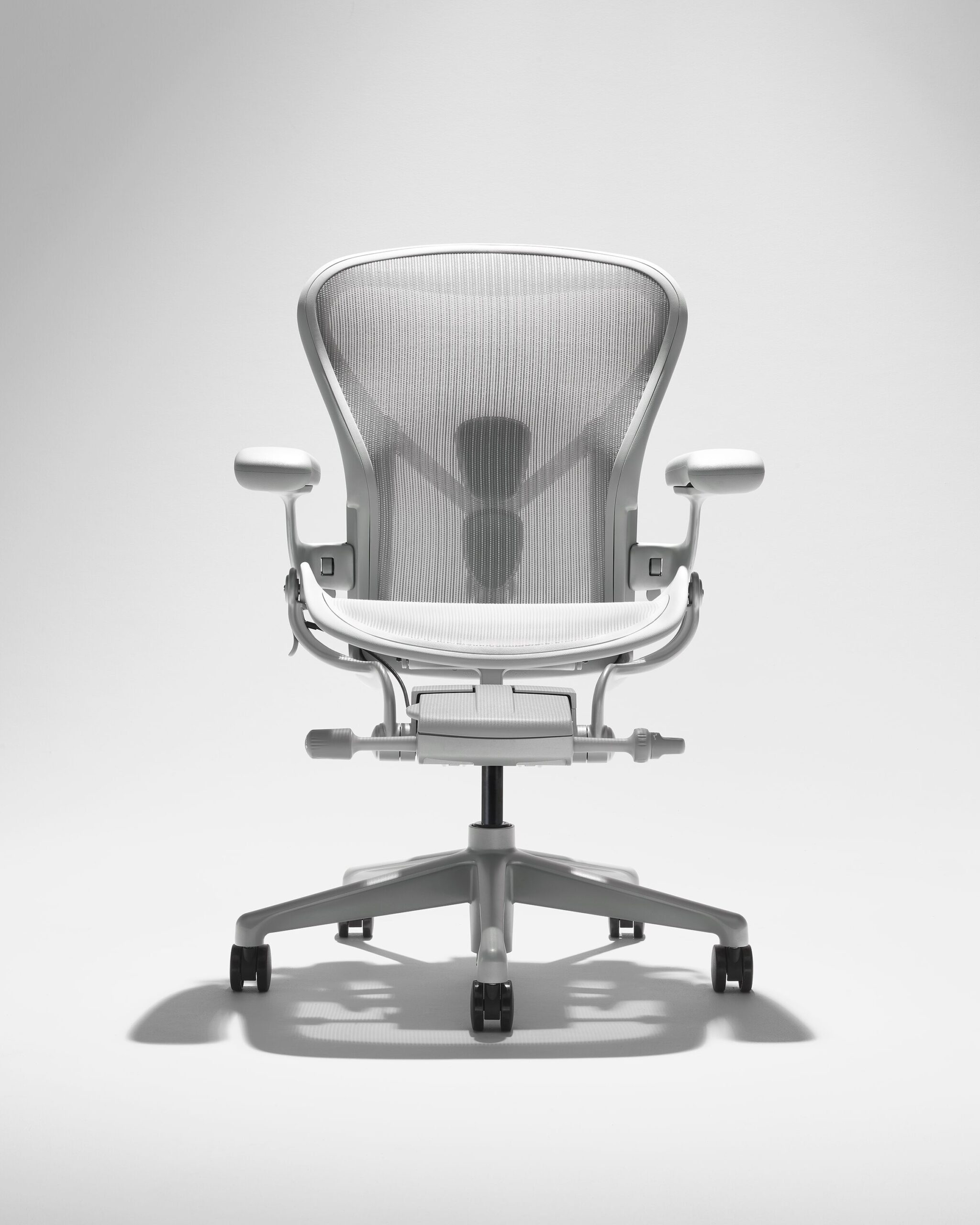 Aeron Chair by Herman Miller
Aeron Chair by Herman Miller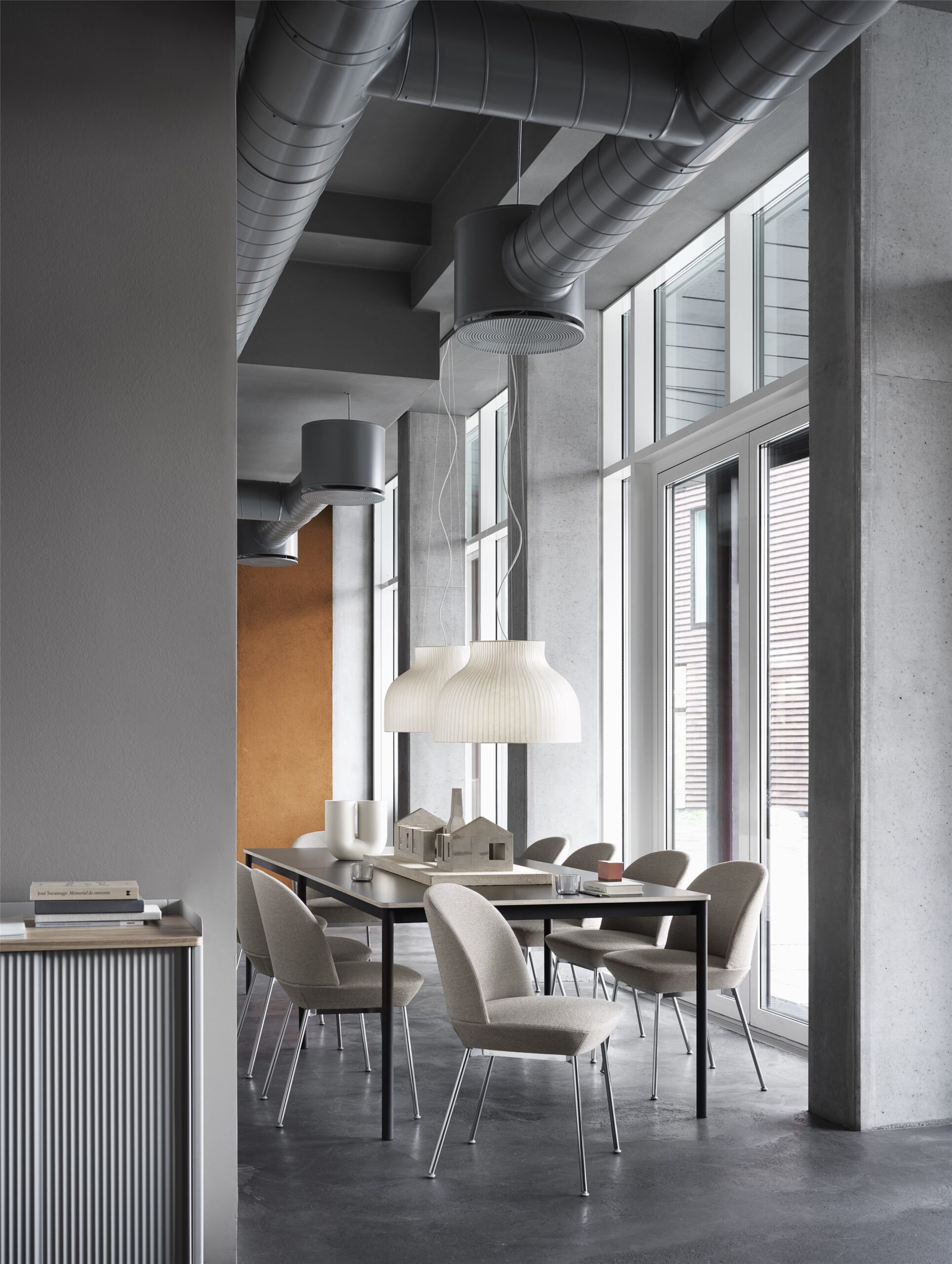 Olso Side Chairs paired with other products from Muuto
Olso Side Chairs paired with other products from Muuto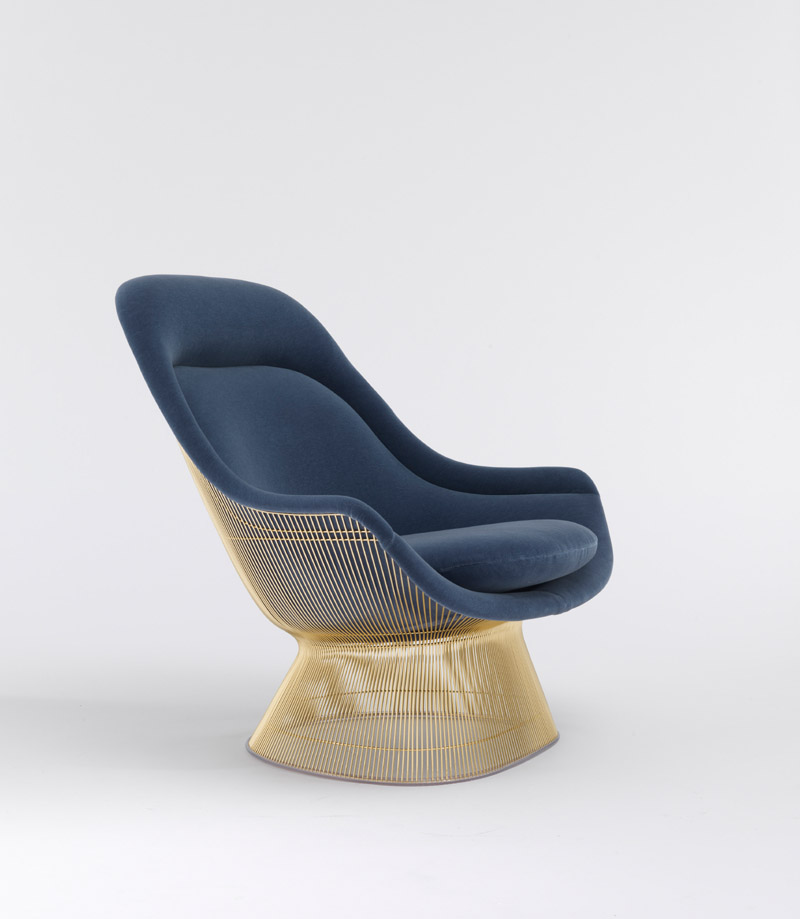 Knoll. Platner Easy Chair Gold. Designed by Warren Platner, 1966. Ph.Ezio Prandini
Knoll. Platner Easy Chair Gold. Designed by Warren Platner, 1966. Ph.Ezio Prandini A selection of chairs from the About A Chair collection by HAY
A selection of chairs from the About A Chair collection by HAY
